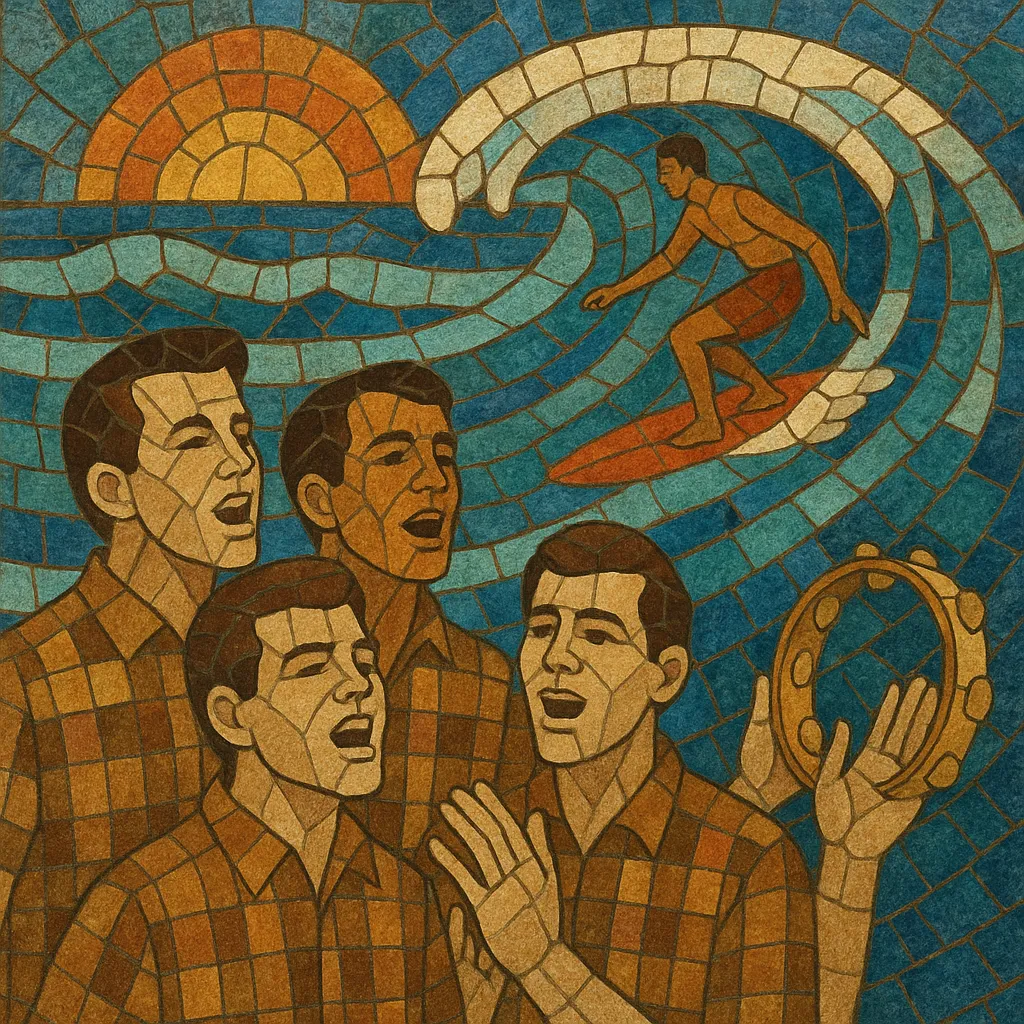Vocal surf is a substyle of surf music that foregrounds rich vocal harmonies and pop songcraft while retaining the reverb‑drenched guitars and driving rhythms of surf rock.
Where instrumental surf emphasizes twangy lead lines and rapid tremolo picking, vocal surf adds tight, doo‑wop–inspired harmony stacks, catchy choruses, and lyrics celebrating surfing, cars, summer romance, and California beach life. The result is a bright, hook‑heavy sound that helped define the "California sound" of the early 1960s.
Typical arrangements combine close‑miked multi‑part vocals with spring‑reverb guitars, snappy backbeats, handclaps, and tambourine, delivering concise, upbeat songs designed for radio and dance floors.
Vocal surf emerged in Southern California in the early 1960s, when local surf bands blended the instrumental surf sound with doo‑wop–style harmonies and teen‑pop songwriting. Early adopters developed infectious choruses, falsetto leads, and call‑and‑response hooks while keeping the hallmark spring‑reverb guitar tone and brisk backbeat of surf rock.
Acts like The Beach Boys and Jan & Dean took the style nationwide in 1962–1964, scoring hits that celebrated surfing, cars, and youthful freedom. Studio projects and producer‑led ensembles (e.g., The Rip Chords, The Hondells, The Fantastic Baggys) further refined the sound with stacked vocals, tight arrangements, and radio‑ready production, crystallizing what became known as the "California sound."
After the British Invasion (1964), vocal surf’s chart dominance waned, with many artists evolving toward broader pop and soft‑rock idioms. Nevertheless, the style periodically resurged through oldies revivals, retro‑surf scenes, and indie bands drawing on its sunny harmonies and melodic immediacy.
Vocal surf’s close harmonies, upbeat hooks, and summery imagery influenced sunshine pop, soft rock, power pop, jangle pop, and later indie pop. Its production aesthetics—layered vocals, tight rhythm sections, and bright reverb—remain touchstones for artists seeking a breezy, nostalgic feel.


